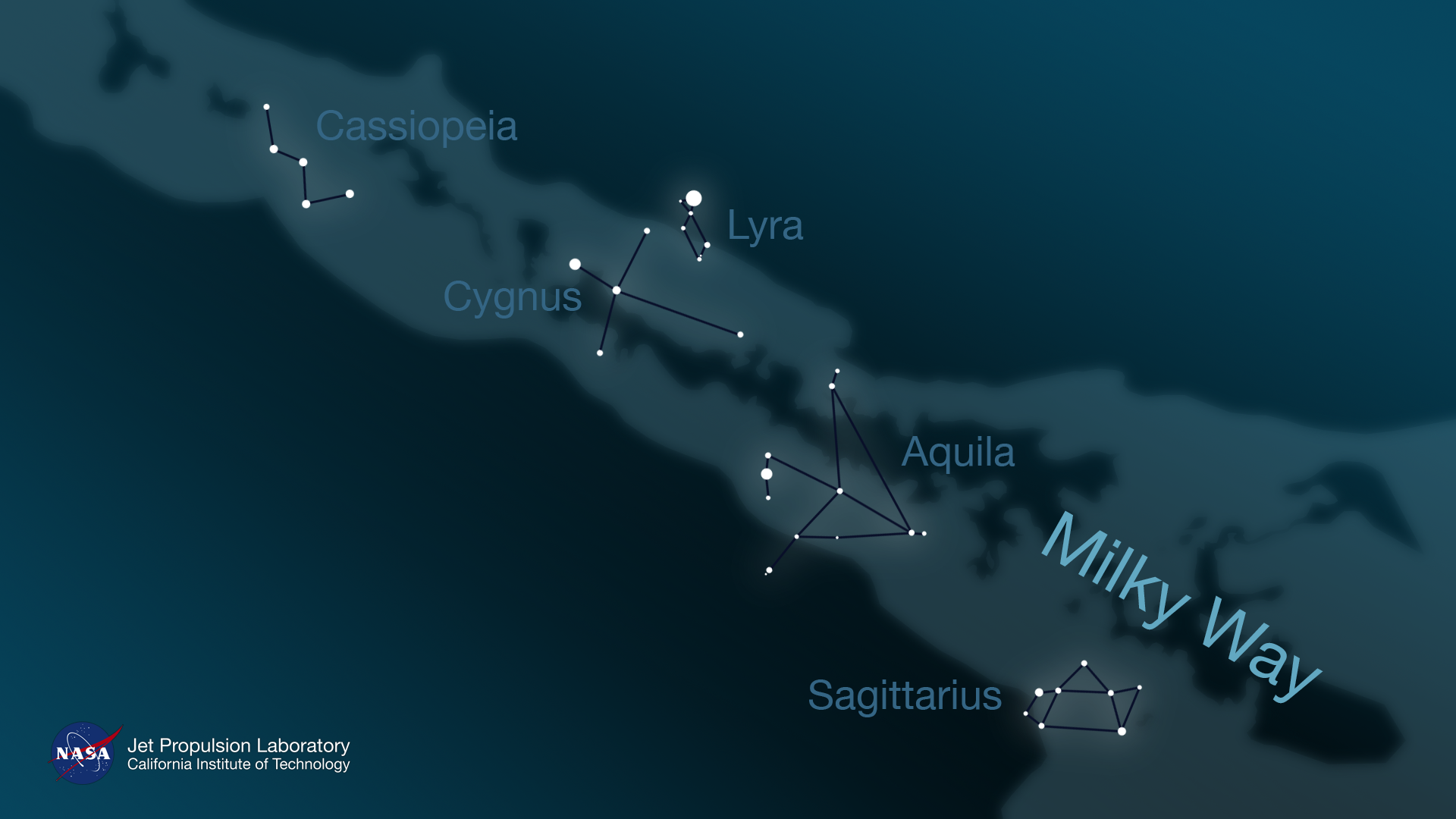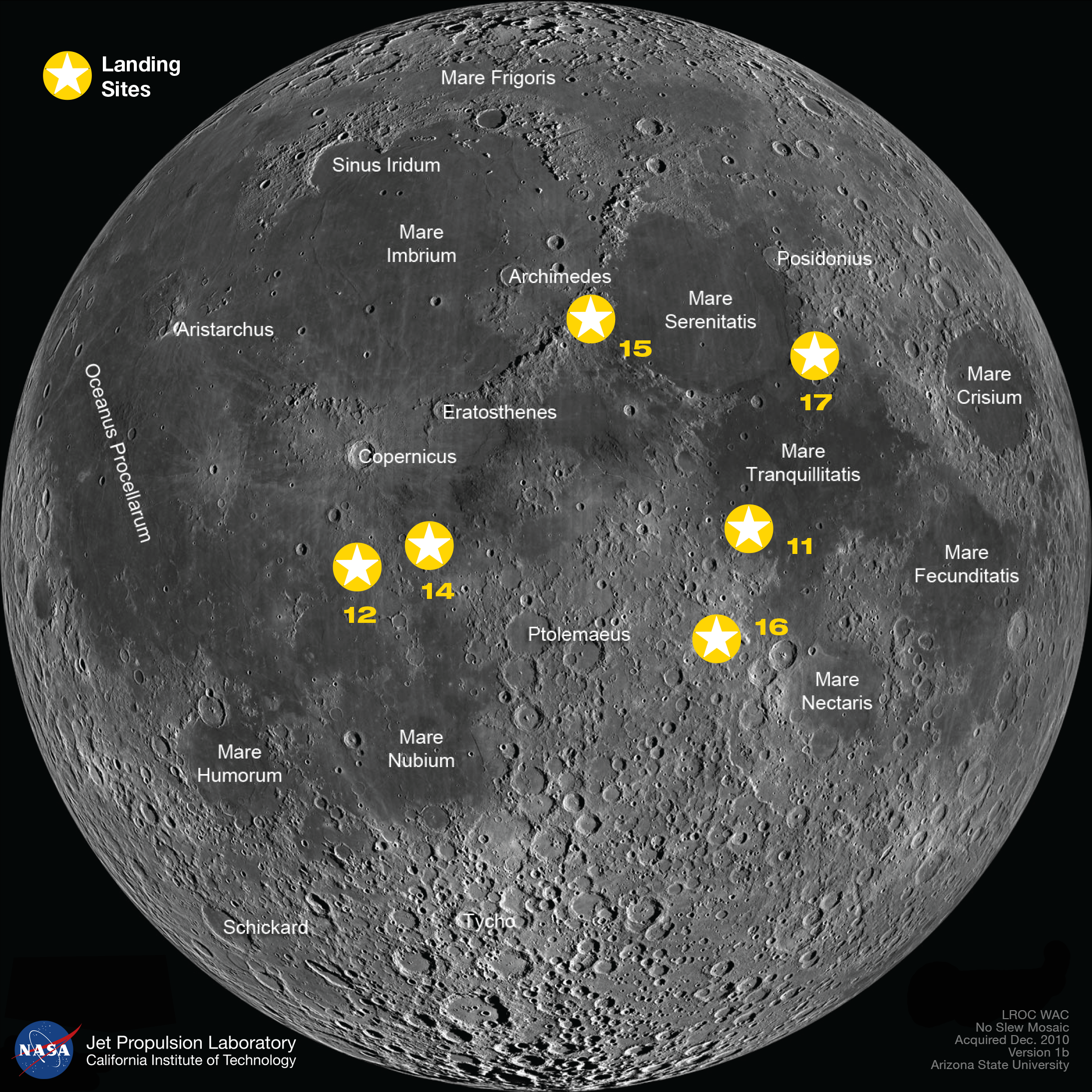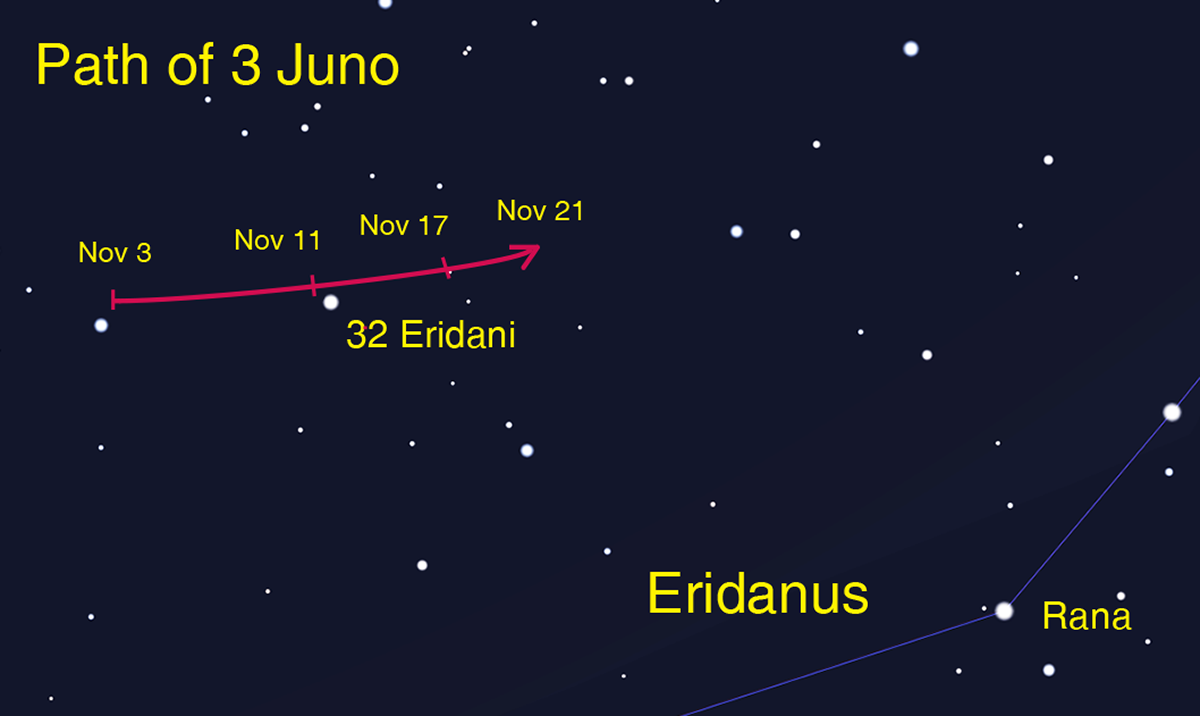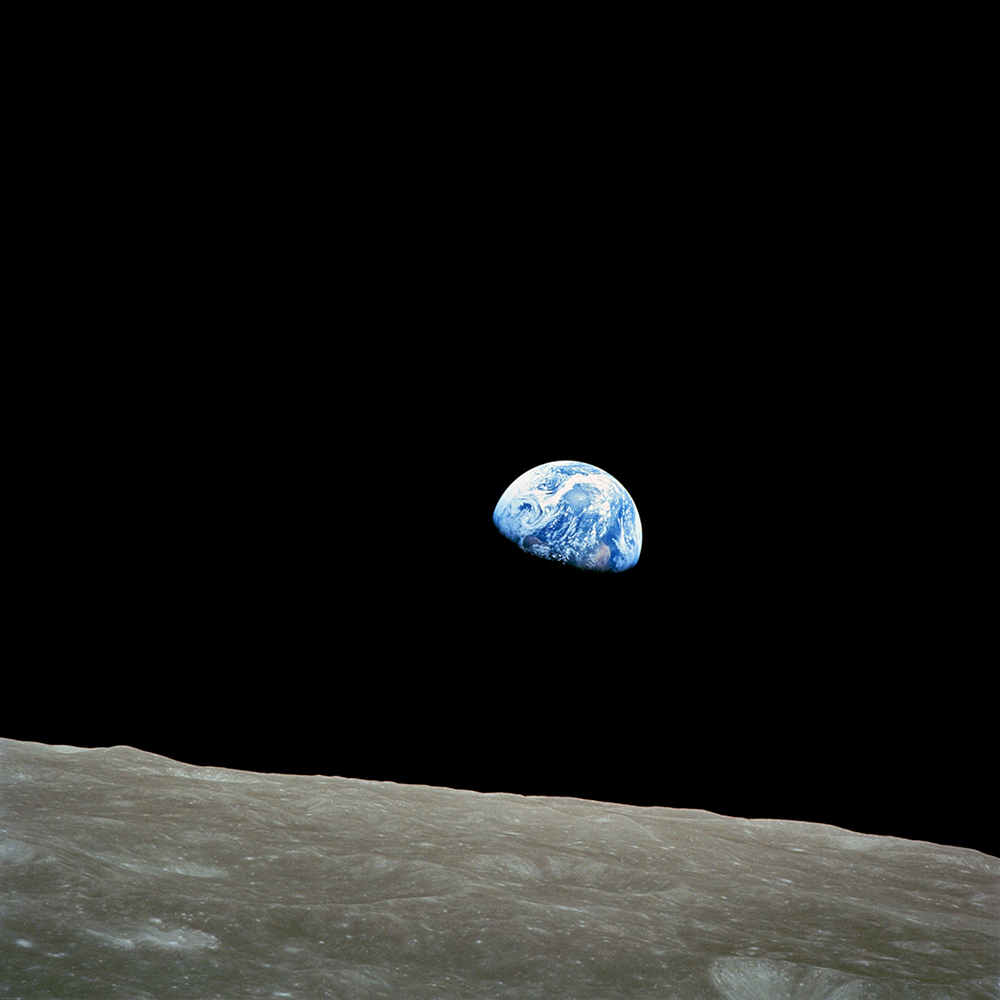Next Launch
Total Students
2,609
Total Launches
683
Eggs Survived
418 61.2%
Rockets Survived
536 78.5%
Sept. 1, 2018
A Trip Through the Milky Way
by Jane Houston Jones and Jessica Stoller-Conrad
Feeling like you missed out on planning a last vacation of summer? Don't worry-you can still take a late summertime road trip along the Milky Way!
The waning days of summer are upon us, and that means the Sun is setting earlier now. These earlier sunsets reveal a starry sky bisected by the Milky Way. Want to see this view of our home galaxy? Head out to your favorite dark sky getaway or to the darkest city park or urban open space you can find.
While you're out there waiting for a peek at the Milky Way, you'll also have a great view of the planets in our solar system. Keep an eye out right after sunset and you can catch a look at Venus. If you have binoculars or a telescope, you'll see Venus's phase change dramatically during September-from nearly half phase to a larger, thinner crescent.
Jupiter, Saturn and reddish Mars are next in the sky, as they continue their brilliant appearances this month. To see them, look southwest after sunset. If you're in a dark sky and you look above and below Saturn, you can't miss the summer Milky Way spanning the sky from southwest to northeast.
You can also use the summer constellations to help you trace a path across the Milky Way. For example, there's Sagittarius, where stars and some brighter clumps appear as steam from a teapot. Then there is Aquila, where the Eagle's bright Star Altair combined with Cygnus's Deneb and Lyra's Vega mark what's called the "summer triangle." The familiar W-shaped constellation Cassiopeia completes the constellation trail through the summer Milky Way. Binoculars will reveal double stars, clusters and nebulae all along the Milky Way.
Between Sept. 12 and 20, watch the Moon pass from near Venus, above Jupiter, to the left of Saturn and finally above Mars!
This month, both Neptune and brighter Uranus can also be spotted with some help from a telescope. To see them, look in the southeastern sky at 1 a.m. or later. If you stay awake, you can also find Mercury just above Earth's eastern horizon shortly before sunrise. Use the Moon as a guide on Sept. 7 and 8.
Although there are no major meteor showers in September, cometary dust appears in another late summer sight, the morning zodiacal light. Zodiacal light looks like a cone of soft light in the night sky. It is produced when sunlight is scattered by dust in our solar system. Try looking for it in the east right before sunrise on the moonless mornings of Sept. 8 through Sept 23.
You can catch up on all of NASA's current-and future-missions at www.nasa.gov
This article is distributed by NASA Space Place. With articles, activities, crafts, games, and lesson plans, NASA Space Place encourages everyone to get excited about science and technology. Visit spaceplace.nasa.gov to explore space and Earth science!
This article was provided by the Jet Propulsion Laboratory, California Institute of Technology, under a contract with the National Aeronautics and Space Administration.
 This illustration shows how the summer constellations trace a path across the Milky Way. To get the best views, head out to the darkest sky you can find. Credit: NASA/JPL-Caltech
This illustration shows how the summer constellations trace a path across the Milky Way. To get the best views, head out to the darkest sky you can find. Credit: NASA/JPL-Caltech
Oct. 1, 2018
Observe the Moon
by Jane Houston Jones and Jessica Stoller-Conrad
This year's International Observe the Moon Night is on Oct. 20. Look for astronomy clubs and science centers in your area inviting you to view the Moon at their star parties that evening!
On Oct. 20, the 11-day-old waxing gibbous Moon will rise in the late afternoon and set before dawn. Sunlight will reveal most of the lunar surface and the Moon will be visible all night long. You can observe the Moon's features whether you're observing with the unaided eye, through binoculars or through a telescope.
Here are a few of the Moon's features you might spot on the evening of October 20:
Sinus Iridum-Latin for "Bay of Rainbows"-is the little half circle visible on the western side of the Moon near the lunar terminator-the line between light and dark.
Another feature, the Jura Mountains, ring the Moon's western edge. You can see them catch the morning Sun.
Just south of the Sinus Iridum you can see a large, flat plain called the Mare Imbrium. This feature is called a mare-Latin for "sea"-because early astronomers mistook it for a sea on Moon's surface. Because the Moon will be approaching full, the large craters Copernicus and Tycho will also take center stage.
Copernicus is 58 miles (93 kilometers) across. Although its impact crater rays-seen as lines leading out from the crater-will be much more visible at Full Moon, you will still be able to see them on October 20.
Tycho, on the other hand, lies in a field of craters near the southern edge of the visible surface of the Moon. At 53 miles (85 kilometers) across, it's a little smaller than Copernicus. However, its massive ray system spans more than 932 miles (1500 kilometers)!
And if you're very observant on the 20th, you'll be able to check off all six of the Apollo lunar landing site locations, too!
In addition to the Moon, we'll be able to observe two meteor showers this month: the Orionids and the Southern Taurids. Although both will have low rates of meteors, they'll be visible in the same part of the sky.
The Orionids peak on Oct. 21, but they are active from Oct. 16 to Oct. 30. Start looking at about 10 p.m. and you can continue to look until 5 a.m. With the bright moonlight you may see only five to 10 swift and faint Orionids per hour.
If you see a slow, bright meteor, that's from the Taurid meteor shower. The Taurids radiate from the nearby constellation Taurus, the Bull. Taurids are active from Sept. 10 through Nov. 20, so you may see both a slow Taurid and a fast Orionid piercing your sky this month. You'll be lucky to see five Taurids per hour on the peak night of Oct. 10.
You can also still catch the great lineup of bright planets in October, with Jupiter, Saturn and Mars lining up with the Moon again this month. And early birds can even catch Venus just before dawn!
You can find out more about International Observe the Moon Night at https://moon.nasa.gov/observe.
This article is distributed by NASA Space Place. With articles, activities, crafts, games, and lesson plans, NASA Space Place encourages everyone to get excited about science and technology. Visit spaceplace.nasa.gov to explore space and Earth science!
This article was provided by the Jet Propulsion Laboratory, California Institute of Technology, under a contract with the National Aeronautics and Space Administration.
 This image shows some of the features you might see if you closely observe the Moon. The stars represent the six Apollo landing sites on the Moon. Credit: NASA/GSFC/Arizona State University (modified by NASA/JPL-Caltech)
This image shows some of the features you might see if you closely observe the Moon. The stars represent the six Apollo landing sites on the Moon. Credit: NASA/GSFC/Arizona State University (modified by NASA/JPL-Caltech)
Nov. 1, 2018
November's Dance of the Planets
by Jane Houston Jones and David Prosper
November's crisp autumn skies bring great views of our planetary neighbors. The Moon pairs up with Saturn and Mars in the evenings, and mornings feature eye-catching arrangements with dazzling Venus. Stargazers wanting a challenge can observe a notable opposition by asteroid 3 Juno on the 17th and watch for a few bright Leonid meteors.
Red Mars gleams high in the southern sky after sunset. Saturn sits westward in the constellation Sagittarius. A young crescent Moon passes near Saturn on the 10th and 11th. On the 15th a first quarter Moon skims by Mars, coming within 1 degree of the planet. The red planet receives a new visitor on November 26th, when NASA's InSight mission lands and begins its investigation of the planet's interior. News briefings and commentary will be streamed live at: https://mars.nasa.gov/insight/timeline/landing/summary/
Two bright planets hang low over the western horizon after sunset as November begins: Jupiter and Mercury. They may be hard to see, but binoculars and an unobstructed western horizon will help determined observers spot them right after sunset. Both disappear into the Sun's glare by mid-month.
Early risers are treated to brilliant Venus sparkling in the eastern sky before dawn, easily outshining everything except the Sun and Moon. On November 6th, find a location with clear view of the eastern horizon to spot Venus next to a thin crescent Moon, making a triangle with the bright star Spica. The following mornings watch Venus move up towards Spica, coming within two degrees of the star by the second full week of November. Venus will be up three hours before sunrise by month's end ? a huge change in just weeks! Telescopic observers are treated to a large, 61" wide, yet razor-thin crescent at November's beginning, shrinking to 41" across by the end of the month as its crescent waxes.
Observers looking for a challenge can hunt asteroid 3 Juno, so named because it was the third asteroid discovered. Juno travels through the constellation Eridanus and rises in the east after sunset. On November 17th, Juno is at opposition and shines at magnitude 7.4, its brightest showing since 1983! Look for Juno near the 4.7 magnitude double star 32 Eridani in the nights leading up to opposition. It is bright enough to spot through binoculars, but still appears as a star-like point of light. If you aren't sure if you have identified Juno, try sketching or photographing its star field, then return to the same area over the next several days to spot its movement.
The Leonids are expected to peak on the night of the 17th through the morning of the 18th. This meteor shower has brought "meteor storms" as recently as 2002, but a storm is not expected this year. All but the brightest meteors will be drowned out by a waxing gibbous Moon. Stay warm and enjoy this month's dance of the planets!
You can catch up on all of NASA's current and future missions at nasa.gov
With articles, activities and games NASA Space Place encourages everyone to get excited about science and technology. Visit spaceplace.nasa.gov to explore space and Earth science!
This article is distributed by the NASA Night Sky Network, a coalition of hundreds of astronomy clubs across the US dedicated to astronomy outreach. Visit nightsky.jpl.nasa.gov to find local clubs, events, stargazing info and more.
This article was provided by the Jet Propulsion Laboratory, California Institute of Technology, under a contract with the National Aeronautics and Space Administration.
 This finder chart shows the path of the asteroid 3 Juno as it glides past 32 Eridani in November 2018. The asteroid's position is highlighted for selected dates, including its opposition on the 17th. Image created in Stellarium for NASA Night Sky Network.
This finder chart shows the path of the asteroid 3 Juno as it glides past 32 Eridani in November 2018. The asteroid's position is highlighted for selected dates, including its opposition on the 17th. Image created in Stellarium for NASA Night Sky Network.
Dec. 1, 2018
Observe Apollo 8's Lunar Milestones
by David Prosper
December marks the 50th anniversary of NASA's Apollo 8 mission, when humans first orbited the Moon in a triumph of human engineering. The mission may be most famous for "Earthrise," the iconic photograph of Earth suspended over the rugged lunar surface. "Earthrise" inspired the imaginations of people around the world and remains one of the most famous photos ever taken. This month also brings a great potential display of the Geminids and a close approach by Comet 46P/Wirtanen
You can take note of Apollo 8's mission milestones while observing the Moon this month. Watch the nearly full Moon rise just before sunset on December 21, exactly 50 years after Apollo 8 launched; it will be near the bright orange star Aldebaran in Taurus. The following evenings watch it pass over the top of Orion and on through Gemini; on those days five decades earlier, astronauts Frank Borman, Jim Lovell, and Bill Anders sped towards the Moon in their fully crewed command module. Notice how the Moon rises later each evening, and how its phase wanes from full on Dec 22 to gibbous through the rest of the week. Can you imagine what phase Earth would appear as if you were standing on the Moon, looking back? The three brave astronauts spent 20 sleepless hours in orbit around the Moon, starting on Dec 24, 1968. During those ten orbits they became the first humans to see with their own eyes both the far side of the Moon and an Earthrise! The crew telecast a holiday message on December 25 to a record number of Earthbound viewers as they orbited over the lifeless lunar terrain; "Good night, good luck, a merry Christmas and God bless all of you - all of you on the good Earth." 50 years later, spot the Moon on these holiday evenings as it travels through Cancer and Leo. Just two days later the astronauts splashed down into the Pacific Ocean after achieving all the mission's test objectives, paving the way for another giant leap in space exploration the following year.
The Geminids, an excellent annual meteor shower, peaks the evening of December 13 through the morning of the 14th. They get their chance to truly shine after a waxing crescent Moon sets around 10:30 pm on the 13th. Expert Geminid observers can spot around 100 meteors per hour under ideal conditions. You'll spot quite a few meteors by avoiding bad weather and light pollution if you can, and of course make sure to bundle up and take frequent warming breaks. The Geminids have an unusual origin compared to most meteor showers, which generally spring from icy comets. The tiny particles Earth passes through these evenings come from a strange "rock comet" named asteroid 3200 Phaethon. This dusty asteroid experiences faint outbursts of fine particles of rock instead of ice.
You can also look for comet 46P/Wirtanen while you're out meteor watching. Its closest approach to Earth brings it within 7.1 million miles of us on December 16. That's 30 times the average Earth-Moon distance! While passing near enough to rank as the 10th closest cometary approach in modern times, there is no danger of this object striking our planet. Cometary brightness is hard to predict, and while there is a chance comet 46P/Wirtanen may flare up to naked eye visibility, it will likely remain visible only via binoculars or telescopes. You'll be able to see for yourself how much 46P/Wirtanen actually brightens. Some of the best nights to hunt for it will be December 15 and 16 as it passes between two prominent star clusters in Taurus: the Pleiades and the V-shaped Hyades. Happy hunting!
Catch up on all of NASA's past, current, and future missions at nasa.gov.
This article is distributed by NASA Night Sky Network
The Night Sky Network program supports astronomy clubs across the USA dedicated to astronomy outreach. Visit nightsky.jpl.nasa.gov to find local clubs, events, and more!
This article was provided by the Jet Propulsion Laboratory, California Institute of Technology, under a contract with the National Aeronautics and Space Administration.
 Caption: Earthrise, 1968. Note the phase of Earth as seen from the Moon. Nearside lunar observers see Earth go through a complete set of phases. However, only orbiting astronauts witness Earthrises; for stationary lunar observers, Earth barely moves at all. Why is that Credit: Bill Anders/NASA
Caption: Earthrise, 1968. Note the phase of Earth as seen from the Moon. Nearside lunar observers see Earth go through a complete set of phases. However, only orbiting astronauts witness Earthrises; for stationary lunar observers, Earth barely moves at all. Why is that Credit: Bill Anders/NASA